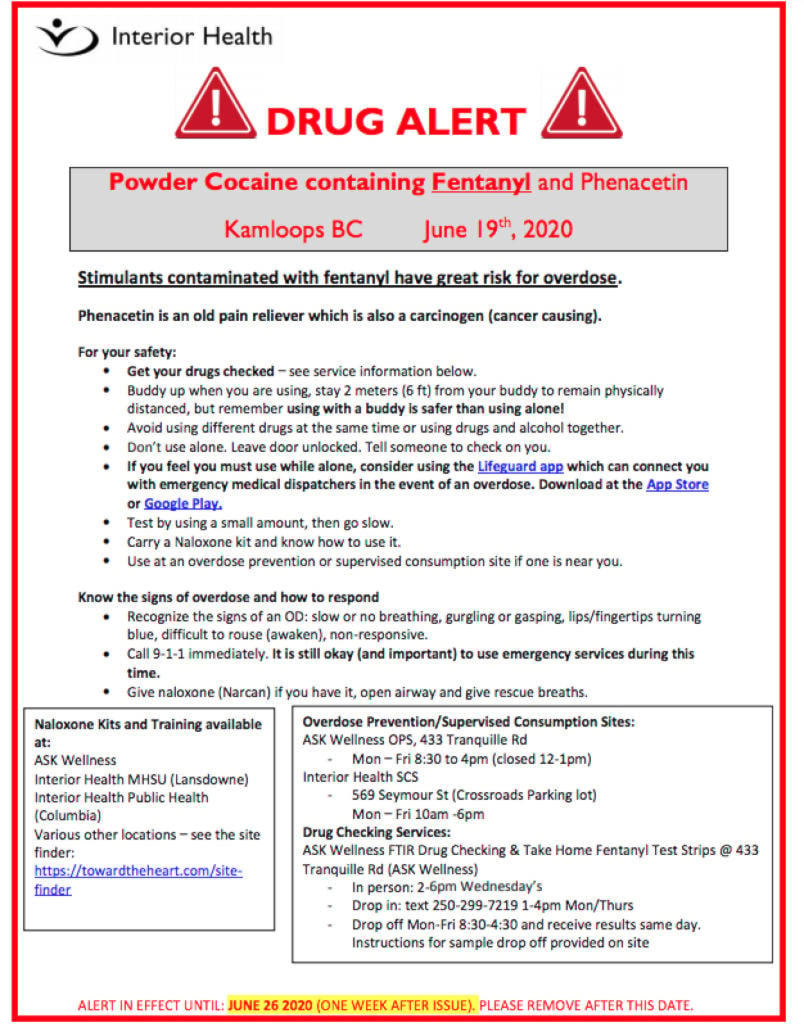Interior Health has issued a warning about a cocaine supply in Kamloops containing fentanyl and phenacetin, the latter being an old pain reliever that is also a carcinogen.
The drug alert was issued on June 19, on the heels of multiple reports on social media of two teens in Westsyde overdosing.
When contacted by KTW on June 19 with questions on reported overdoses in Westsyde, an Interior Health spokesperson responded via mail:
“We can’t speak to a specific case. We can tell you and continue to warn anyone who uses any kind of drug that there is a highly toxic drug supply in our communities and people are dying in record numbers. We appeal to parents to speak to their children and ask any person who uses drugs to get their drugs checked and never use alone.”
While the social media posts reference the possibility of marijuana being laced with toxic substances such as fentanyl, the Interior Health drug alert specifies powdered cocaine containing fentanyl and phenacetin.
Fentanyl is a cheap, powerful drug used by some dealers to increase the profitability of such powdered drugs as cocaine and heroin, with the cheaper — and deadlier — fentanyl mixed in to increase volume sold.
As of this writing, and pending investigations of the reported overdoses in Kamloops, there have been no confirmed incidents in Canada of marijuana laced with fentanyl. As stated by the Canadian Medical Association Journal in January, quoting Dr. Jane Philpott during her tenure as Minister of Health in 2019: “Very important that everyone understands that — and we have confirmed this with chiefs of police, law enforcement officials across this country — there is zero documented evidence that ever in this country cannabis has been found laced with fentanyl.”
Interior Health added this information in its response to KTW:
• Don’t mix different drugs (including pharmaceutical medications, street drugs, and alcohol).
• Don’t take drugs when you are alone. Leave door unlocked. Tell someone to check on you.
• If you feel you must use while alone, consider using the Lifeguard app which can connect you with emergency medical dispatchers in the event of an overdose. Download at the App Store or Google Play.
• Keep an eye out for your friends – stay together and look out for each other.
• Carry a Naloxone kit and know how to use it. A list of locations to get a kit can be found on the Interior Health website or on the Toward the Heart website .
• Recognize the signs of an OD: slow or no breathing, gurgling or gasping, lips/fingertips turning blue, difficult to rouse (awaken), non-responsive.
• If someone thinks they may be having an overdose or is witnessing an overdose, follow the SAVE ME steps and call 9-1-1 immediately, do not delay.
